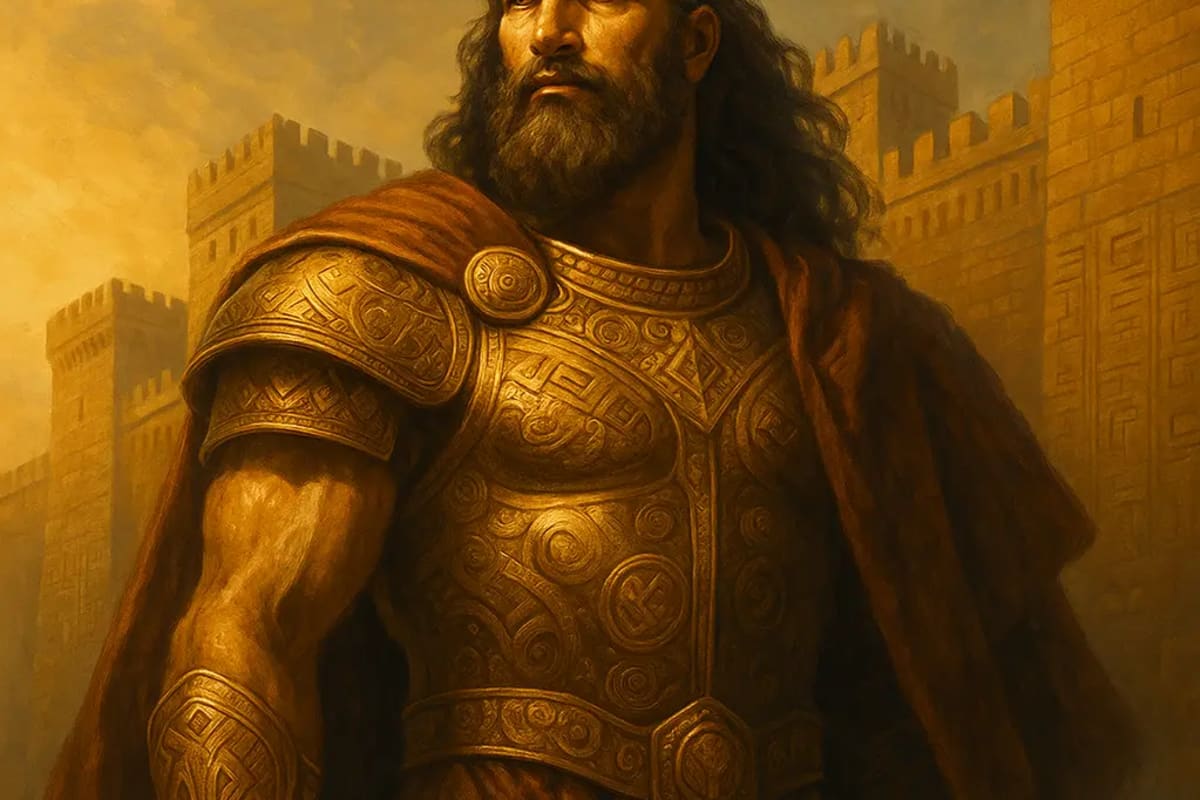
Gilgamesh: The First Hero of History – Legend, Legacy, and the Search for Immortality
Discover the legendary story of Gilgamesh — the ancient king of Uruk, half-god hero, and seeker of immortality. Explore his epic journey, historical roots, and timeless legacy.
News & Niche
In the cradle of civilization, before the rise of Egypt’s pyramids or the conquests of Alexander the Great, a name echoed through the river valleys of ancient Mesopotamia: Gilgamesh. A name cloaked in both myth and memory. A man. A demigod. A king. A seeker of immortality.
Today, historians and archaeologists continue to debate the truth behind his story. Was Gilgamesh real, or was he merely a symbol of mankind’s oldest dreams and fears?
Let’s journey back over 4,000 years to uncover the story of the world’s first known epic hero.
Who Was Gilgamesh?
According to ancient Sumerian king lists, Gilgamesh ruled the city of Uruk around 2700 BCE. He is often identified as the fifth king of Uruk, a city located in what is now modern-day Iraq. What makes Gilgamesh unique among ancient rulers is not just his reign, but the mythic dimensions attributed to him.
The Sumerians described him as two-thirds god and one-third human, born of the goddess Ninsun and a mortal king named Lugalbanda. He was said to possess unmatched strength and ambition. But early accounts depict him as a tyrant — abusing his divine power, exhausting his people with forced labor, and demanding privileges that provoked resentment.
In response to his cruelty, the gods created Enkidu — a wild, untamed man of the wilderness, to balance and ultimately humble Gilgamesh.
Gilgamesh and Enkidu: A Bond Forged in Battle
When Enkidu arrived in Uruk, he challenged Gilgamesh to a duel. Their violent clash shook the city, but neither was victorious. Instead, the fight forged an extraordinary friendship between them.
From there, the tale turns into a legendary buddy epic. Together, they ventured into the Cedar Forest — the domain of Humbaba, a monstrous guardian appointed by the gods. Despite divine warnings, the two heroes slew the demon and cut down the sacred cedars — an act of defiance that enraged the heavens.
Their audacity did not stop there. When the goddess Ishtar proposed marriage to Gilgamesh, he rejected her. In revenge, she sent the Bull of Heaven to punish Uruk. Yet again, Gilgamesh and Enkidu emerged victorious.But their repeated defiance could not go unpunished.
The Death of Enkidu and the Fear of Mortality
The gods struck Enkidu with a mysterious and fatal illness. As Enkidu lay dying, Gilgamesh was overwhelmed with grief — and with something even more terrifying: the realization that he, too, was mortal.
This profound awakening drove Gilgamesh on his most personal and haunting journey — the quest for eternal life.
The Search for Immortality
Gilgamesh wandered through distant lands, crossed oceans and deserts, and passed through gates guarded by scorpion-men. His journey led him to Utnapishtim, the only man granted immortality by the gods after surviving a great flood — a story that bears remarkable resemblance to the tale of Noah’s Ark in the Hebrew Bible.
Utnapishtim tested Gilgamesh, asking him to stay awake for seven days. He failed.
Still, the old immortal revealed the location of a plant that could restore youth. Gilgamesh found it — only to have it stolen by a serpent while he rested on his way home.
In the end, he returned to Uruk — not immortal, but wiser. He had faced death and accepted the limits of human life.
Was Gilgamesh a Real Person?
The question remains: Was Gilgamesh real or mythical?
In 1853, archaeologists excavating the ruins of Nineveh (modern-day Iraq) discovered clay tablets in the royal library of Assyrian king Ashurbanipal. Among them was The Epic of Gilgamesh — the oldest surviving piece of literature in human history, dating back to at least 2100 BCE.
The Sumerian King List, a historical document, names a king called Bilgamesh (believed to be an earlier form of the name Gilgamesh). Several inscriptions and tablets also refer to a mighty king who built Uruk’s massive walls — just as the epic describes.
Although no tomb or direct physical evidence has confirmed his existence, many scholars believe Gilgamesh was likely a real historical figure who was later deified and mythologized over centuries — much like King Arthur in Britain or Achilles in Greece.
Why Gilgamesh Still Matters
The Epic of Gilgamesh is far more than a story of monsters and gods. It touches on deeply human themes:
Friendship and how it transforms us.
Grief and how it shapes our soul.
Mortality and our universal struggle to accept it.
Hubris, the pride that often comes before downfall.
It was Gilgamesh who first asked the question:
“Why must we die?”
That question has echoed through every era, in every civilization, and it still resonates today.
The Legacy of a Timeless Hero
The story of Gilgamesh has influenced countless works — from the Bible to Homer’s epics to modern literature. The tale of the Great Flood, in particular, shares striking similarities with the biblical story of Noah, suggesting a shared cultural memory passed down over millennia.
In Gilgamesh, we find the seeds of all epic storytelling: a flawed hero, a transformative journey, a tragic loss, and the eternal pursuit of something greater than oneself.
Though Gilgamesh may have lived over 4,000 years ago, his story feels remarkably modern — because at its heart, it is the story of what it means to be human.
So, was Gilgamesh real?
Perhaps partly.
But more importantly, his story is real — real in its emotional depth, its philosophical questions, and its timeless resonance.
Whether he was man or myth, king or legend, Gilgamesh is unforgettable.
And in remembering him, we connect with the earliest echoes of our own humanity.